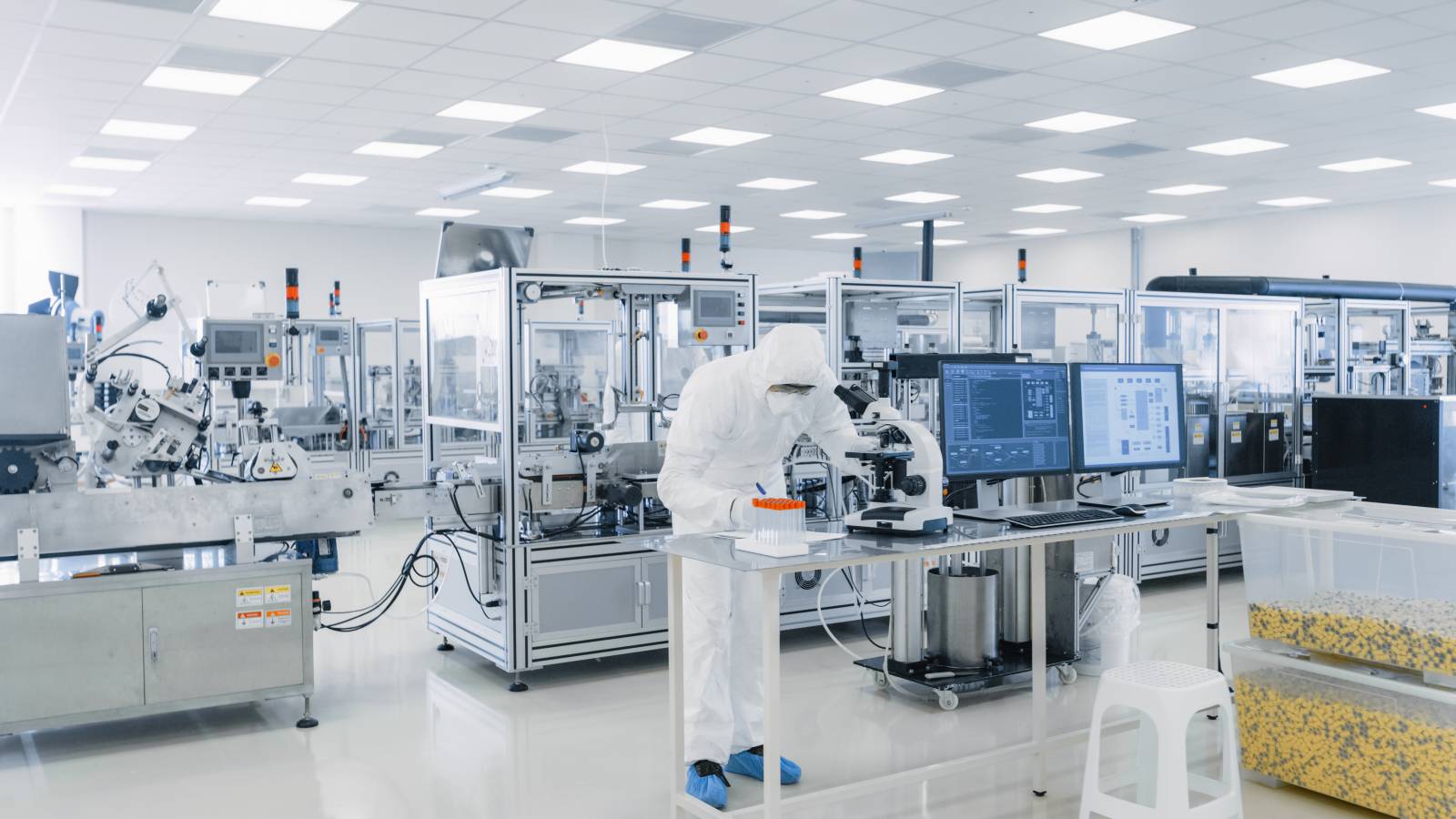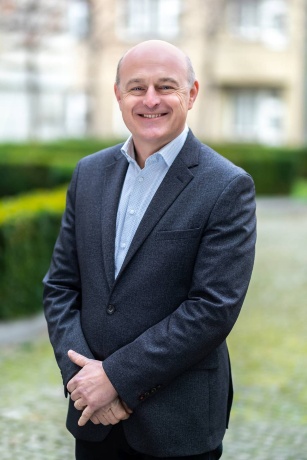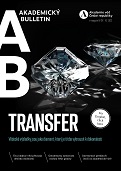
We want to help scientists apply their research, says head of CeTTAV
22. 11. 2022
It begins with a discovery, it ends with its application in practice and a benefit to society. On the crossroads leading to patents and inventions stands CeTTAV, the Technology Transfer Centre of the CAS, offering guidance to CAS institutes. In an interview for the October issue of AB / Academic bulletin, Martin Smekal, head of CeTTAV, described how to support knowledge and technology transfer at the Czech Academy of Sciences.
With a bit of exaggeration, successful knowledge and tech transfer is to a scientist what a diamond – the king of gemstones – is to a jeweller. Like cutting a diamond, the transfer of basic research into practice can sometimes present a challenge. But eventually, it can become the crown jewel of a scientist’s research. To avoid topping the Mohs scale of mineral hardness with red tape and paperwork, researchers can turn to CeTTAV – the Technology Transfer Centre of the CAS for help. Martin Smekal, who has headed CeTTAV since 2022, describes below how the centre supports CAS institutes in integrating knowledge and tech transfer into their work.
You took over the management of CeTTAV at the beginning of this year. What brought you to the Czech Academy of Sciences?
The expectation that I would be able to contribute to the application of science in practice. I was also convinced by the fact that the leadership of the Academy considers knowledge and technology transfer to be a strategic priority.
From the perspective of a tech transfer specialist, what does the ideal scientist look like?
A likeable person who does everything the transfer specialist tells them to do, meets deadlines, and lights up at the very sight of them... No, but seriously – we see the ideal scientist as someone who values their work and is interested in seeing their results implemented in the commercial sphere. Moreover, this ideal scientist understands that they can benefit from the professional help of someone who knows their way around the legal, business, and economic maze.
Should researchers be thinking about tech transfer prior to opening their lab or research facility?
I don’t think they necessarily need to think about transfer at the beginning of their research. But they should be aware of how their specialisation relates to practical needs or long-term trends in relevant fields. The fellow scientists I meet all have a vision. They know how their research can be useful.
CeTTAV provides various activities for the CAS institutes – which are the most important?
We want to support researchers in being better prepared to apply their research. We therefore also provide them with financial support which allows them to make breakthroughs at various stages of technology and knowledge development. We can help with raising money to build prototypes, to cover the costs of testing, to recruit new team members in charge of commercialisation, or to find investors to set up and launch spin-off companies.
And who have you helped so far?
We have been working with institutes not only in Prague but all over the Czech Republic. I will mention the CAS Institute of Scientific Instruments, the J. Heyrovský Institute of Physical Chemistry, and the Institute of Rock Structure and Mechanics. We also help other institutes of the CAS.
Knowledge and tech transfer is therefore a kind of culmination of the scientists’ research.
Exactly. If we get it right, it results in the fulfilment and appreciation of every researcher’s work. It’s not about the money alone, but about the real appreciation of the research. This became evident during the COVID-19 pandemic. The results of the work of the CAS and its institutes found significant application then.

Martin Smekal is the head of CeTTAV since the beginning of this year. (CC)
You mentioned spin-off companies. How do they work in an academic environment?
One way is to establish a company to apply technology. In certain fields, it is the preferred route, although it is neither easier nor faster. At the CAS, we have experience in setting up spinoffs. CeTTAV has been involved in several projects this year. These are technologies that have the potential to achieve international success with a global impact. We want the other institutes and teams to see this as a possible option for transfer.
Do the institutes ever have concerns about setting up spin-off companies?
You’re not wrong. Their attitude stems from a fear of the unknown. Part of it is the lack of clarity regarding the rules involved in setting up a company. In cooperation with colleagues from the Head Office of the CAS (the Legal and Property Section and the Controlling Section), we are preparing guidelines and other documents to simplify the establishment of spinoffs.
What is the focus of your trainings and workshops?
We organise trainings not only for researchers, but for all colleagues who support tech transfer within the Academy. We show them what entails putting research results into practice and what risks it can potentially bring.
What are some examples?
Not every transfer effort will be successful. The problem is that not achieving a transfer is perceived by many as a failure. Researchers are therefore afraid to attempt it at all. The potential risk of criminalisation is another issue.
What do you mean?
The potential criminalisation is mainly related to the responsibility managers have in managing the assets. However, if the transfer is done correctly, there is no risk. It is more of an unjustified fear of the unknown.
Linking research to practice is usually a long-haul endeavour. Can CeTTAV speed up the transfer of results from the labs?
It is not always possible to accelerate the implementation of an invention. However, we can help plan the most effective course of action. We have the experience and can avoid the unpleasant surprises that stem from ignorance – for instance, not knowing the expectations of partners or the internal procedures and requirements related to the approval process at the particular institute or the Academy as a whole.
What projects is CeTTAV working on, what is the place of the humanities in the transfer and is it sufficiently supported by the European Union and the Czech Republic? Read the full interview (in English) here.
Ing. Martin Smekal
Smekal took over the management of CeTTAV this year with a vision to strengthen the status and importance of the centre not only within the framework of the Czech Academy of Sciences, but also across the Czech Republic and Central Europe. He has worked in various positions in all the Big Four accounting firms. During the past ten years, he has applied his experience in management positions in companies focused on innovation and digitalisation. He has founded and led several ICT services companies.
The October issue of AB / Academic bulletin:
10/2022 (version for browsing)
10/2022 (version for download)
Prepared by: Luděk Svoboda & Zuzana Dupalová, Division of External Relations, CAO of the CAS
Translated by: Tereza Novická, Division of External Relations, CAO of the CAS
Photo: Shutterstock; Jana Plavec, Division of External Relations, CAO of the CAS
 The text and photos marked (CC) are released for use under the Creative Commons licence.
The text and photos marked (CC) are released for use under the Creative Commons licence.
Read also
- A trapped state: The pandemic impact on public attitudes, trust, and behavior
- Aerial archaeology: Tracing the footsteps of our ancestors from the sky
- Archaeologists uncover ancient finds along Prague Ring Road
- Our microbiome largely depends on what we eat, says microbiologist Michal Kraus
- The ABCs of writing: Why did its invention mark a turning point for humankind?
- We learn, remember, forget… What can memory actually do? And can we outsmart it?
- New Center for Electron Microscopy in Brno opens its doors to global science
- The hidden lives of waste: What can we learn from waste workers and pickers?
- A unique lab is hidden right beneath Prague’s Vítkov Hill
- Renewables are a strategic investment in European security, scientists say
The Czech Academy of Sciences (the CAS)
The mission of the CAS
The primary mission of the CAS is to conduct research in a broad spectrum of natural, technical and social sciences as well as humanities. This research aims to advance progress of scientific knowledge at the international level, considering, however, the specific needs of the Czech society and the national culture.
President of the CAS
Prof. Eva Zažímalová has started her second term of office in May 2021. She is a respected scientist, and a Professor of Plant Anatomy and Physiology.
She is also a part of GCSA of the EU.
